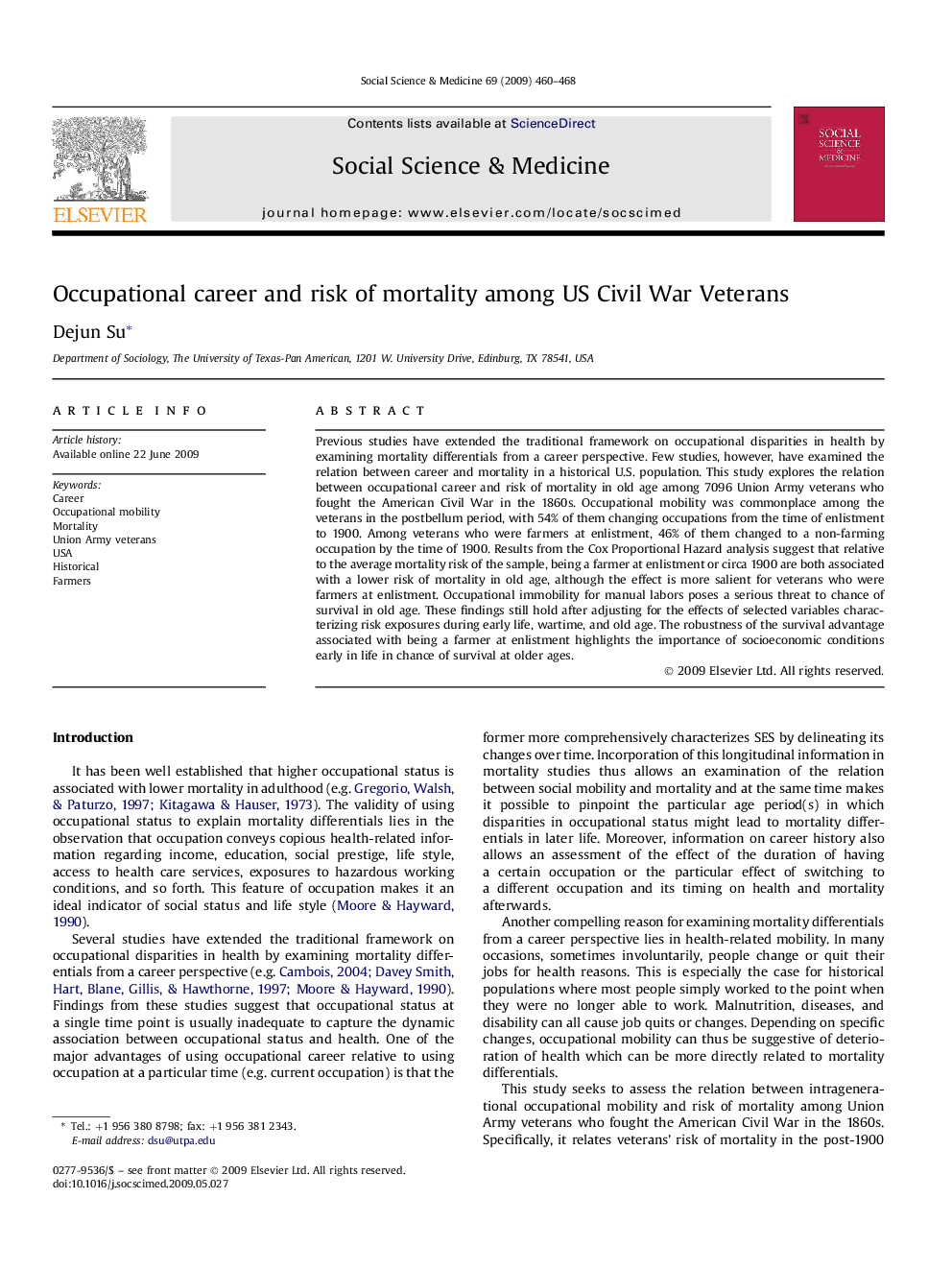| Article ID | Journal | Published Year | Pages | File Type |
|---|---|---|---|---|
| 953348 | Social Science & Medicine | 2009 | 9 Pages |
Previous studies have extended the traditional framework on occupational disparities in health by examining mortality differentials from a career perspective. Few studies, however, have examined the relation between career and mortality in a historical U.S. population. This study explores the relation between occupational career and risk of mortality in old age among 7096 Union Army veterans who fought the American Civil War in the 1860s. Occupational mobility was commonplace among the veterans in the postbellum period, with 54% of them changing occupations from the time of enlistment to 1900. Among veterans who were farmers at enlistment, 46% of them changed to a non-farming occupation by the time of 1900. Results from the Cox Proportional Hazard analysis suggest that relative to the average mortality risk of the sample, being a farmer at enlistment or circa 1900 are both associated with a lower risk of mortality in old age, although the effect is more salient for veterans who were farmers at enlistment. Occupational immobility for manual labors poses a serious threat to chance of survival in old age. These findings still hold after adjusting for the effects of selected variables characterizing risk exposures during early life, wartime, and old age. The robustness of the survival advantage associated with being a farmer at enlistment highlights the importance of socioeconomic conditions early in life in chance of survival at older ages.
